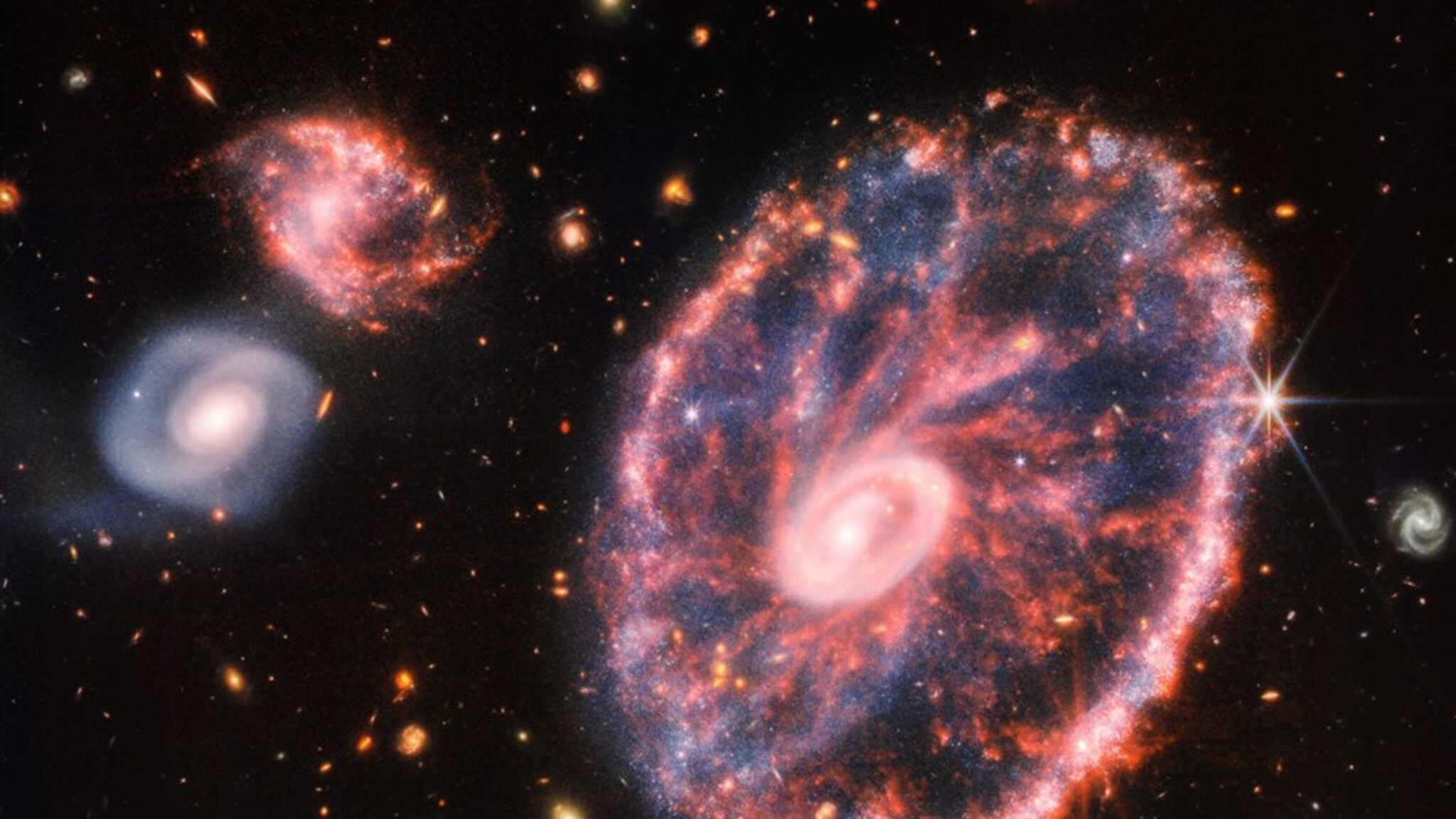James Webb’s images show countless galaxies far away, each made up of billions of stars. Contrary to what you might expect, it is the barely visible points of light that are of primary interest to astronomers. Some of these galaxies are so far away that we can look back to 250 million years after the Big Bang.
Child’s period in the universe
“The light from such a galaxy took a long time to travel that huge distance to Earth. So you see the light that came out a long time ago — billions of years ago. That means you look back in time and in such a picture you can see what those galaxies looked like Very soon after the Big Bang.”
“250 million years” might sound like a lot, Schilling says, but that’s a child’s childhood. “It’s like I only saw pictures of you from your childhood and teenage years and now all of a sudden I get a picture an hour after you were born.” Amazing, Schilling calls it.
uninhabited island
There is great enthusiasm among astronomers about the data provided by the James Webb Telescope. One scientific publication after another is being published. “It’s like arriving on a desert island with a group of people. You don’t know where to start your search yet, but you know you won’t be finished in the coming months. No one expected that much in advance.”
Life on Earth will not change by James Webb. “I sometimes compare the interest in galaxies – the origin of the universe – with people’s interest in their family tree. It’s not practically rewarding to know who your distant ancestor is, but it does give a kind of satisfaction to knowing where you’re coming from. This telescope allows us to look at what started it all, the Big Bang.”
We won’t see the Big Bang itself, says Schilling. “The telescope doesn’t look with the right ‘type of radiation’ for it. To detect the energy of the Big Bang, you need a radio telescope. It’s already happened. Who knows, we might one day piece it all together into one coherent origin story.”
James Webb
James Webb (named after a now deceased NASA administrator) was developed by the United States, Europe, and Canada. The space telescope was launched on Christmas Day. It is the successor to the famous Hubble Space Telescope, which is nearing its end. At the end of January, after about a month of flying, James Webb arrived at his workplace 1.5 million kilometers from Earth. After getting there, all the systems were tested and the devices on board were cooled, so that the temperature of one of them reaches minus 266 degrees. Mirrors have also been modified. They collect the light that comes from the universe and send it to measuring instruments.
James Webb has eighteen hexagonal mirrors that sit together, but can move independently of each other to focus. The mirror is made of beryllium, topped with a small layer of gold, 100 nanometers thick. This is a thousand times thinner than a human hair or paper. Beryllium is light, strong and can withstand extreme cold. Gold ensures that the mirror can better see infrared light.







